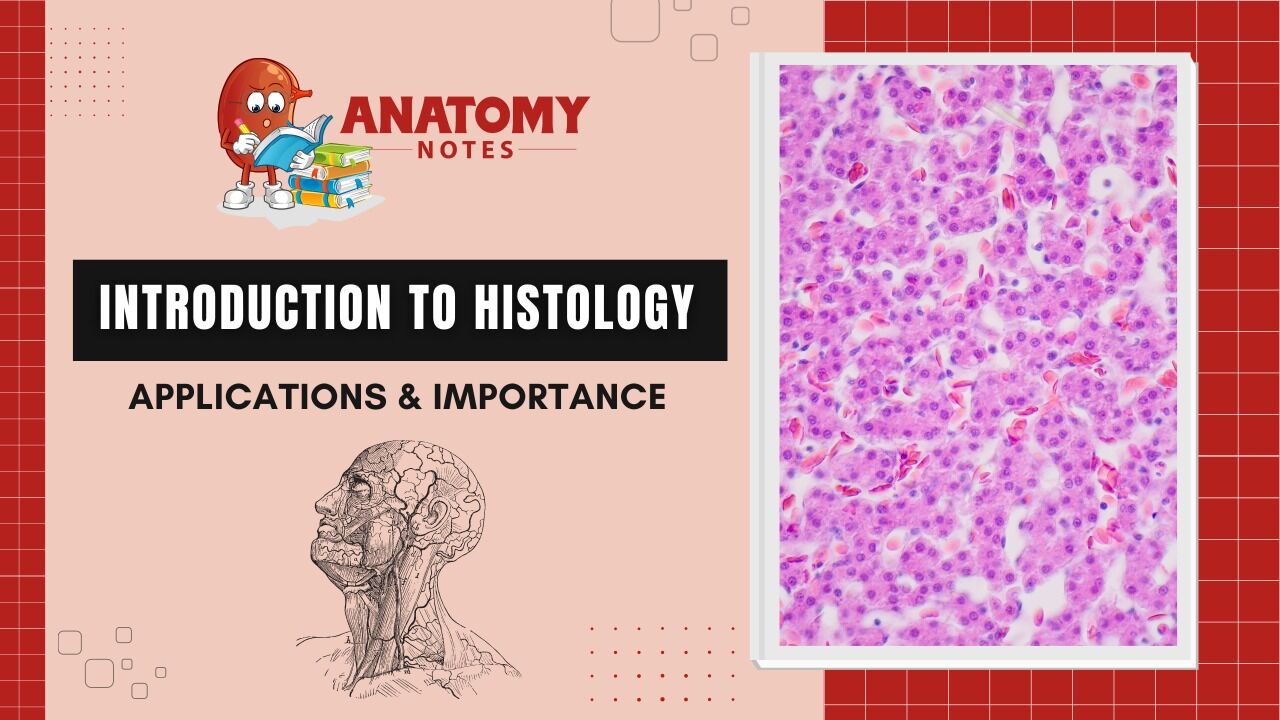Histology is the branch of human anatomy which deals with the microscopic study of tissues of human body.
There is level of organisation in human body. As we all know the group of similar cells form a tissue and the combination of different tissue forms the organs and the group of organ forms the organ system.
So the specific and adequate knowledge of histology is very important to understand the detail structure and function of organ system.
Histology commonly performed by examining cells and tissues under a light microscope.
Application of histology
A.) Education
- Histology slides are often used in schools, institutes and university laboratories to help out the students to learn thoroughly and practically about the microstructures of human (and animal) biological tissue.
B.) Diagnosis (for treatment)
- Biological tissue samples taken from a patient (that is, a specific person or animal’s body) may be studied in detail to enable medical (or veterinary – in case of animals) experts to learn more about the patient’s condition and hence perhaps understand its causes and make recommendations for treatment or management of the condition.
C.) Forensic investigations
- Forensic histology, immunohistochemistry and cytology involving microscopic study of biological tissues using various stains can help clarify the cause of sudden unexpected deaths and other issues in forensic science.
D.) Autopsy
Biological tissues from a deceased person or animal can be studied using histological techniques enabling experts (e.g. pathologists re. unexplained death of a person) to learn about the circumstances and possibly cause of death.
E.) Archaeology
- Study of biological cells and tissues recovered from archaeological sites can provide information about history, even ancient history.
- The state of preservation of the biological material is critical, yet sometimes sufficient e.g. for bone histology and dental histology.
Importance of Histology
Microscopy in histology provide us the minor details of tissues of human body which has significance in medical profession to understand the mechanisms of different process of specific organ.
Histology is very useful in the diagnosis of certain diseases like cancers.
Here we will study the detailed histology in following sections :-
- Microscopy
- Introduction of cell and tissue
- Histology of epithelium tissue
- Histology of Connective tissue
- Histology of Muscle
- Histology of Nervous tissue
- Histology of Circulatory system
- Histology of Lymph organs
- Histology of Skin and its appendages
Frequently Asked Questions (FAQs)
What is histology introduction?
Histology is the study of the microscopic anatomy of tissues and organs. It involves the examination of thin slices of biological specimens under a microscope to understand their structure, organization, and function. This field plays a critical role in the diagnosis and treatment of diseases and helps to advance our understanding of the human body at the cellular level.
Who introduced histology?
Marcello Malpighi, an Italian physician and biologist, is credited with introducing the field of histology in the mid-17th century. He was the first to use a microscope to examine thin slices of animal and plant tissues, and his observations led to the discovery of the capillary network and the role of the lungs in respiration. Malpighi’s pioneering work laid the foundation for the modern study of histology.
What is the importance of histology?
Diagnosis of diseases: Histology plays a critical role in the diagnosis of diseases by allowing physicians to examine tissues and organs at a microscopic level. Abnormalities in the structure of tissues can indicate the presence of disease or other medical conditions.
Treatment of diseases: Histology is used to determine the best treatment options for certain diseases. For example, a biopsy of a cancerous tumor can be examined histologically to determine the type of cancer and the appropriate course of treatment.
Understanding normal anatomy: Histology helps us to understand the normal structure and function of tissues and organs in the body. This knowledge is essential for understanding how the body works and how it responds to various stimuli.
Advancement of medical research: Histology is a critical tool in medical research, allowing scientists to study the cellular and molecular mechanisms underlying various diseases and conditions.
Why is it called histology?
The term “histology” comes from the Greek words “histos,” meaning tissue, and “logos,” meaning study. Therefore, histology can be translated as the study of tissues. The name reflects the focus of the field, which is the examination and analysis of the structure, organization, and function of tissues in the body.
What are the stages of histology?
The stages of histology can vary depending on the specific type of tissue or specimen being analyzed, but the general stages include:
Fixation: The tissue or specimen is preserved using a chemical fixative, such as formalin, to prevent decay and maintain the structural integrity of the sample.
Processing: The tissue is dehydrated using alcohol and then embedded in a medium, such as paraffin wax, which provides support for cutting thin sections.
Sectioning: The embedded tissue is cut into thin slices, or sections, using a microtome.
Staining: The tissue sections are stained using various dyes to highlight different structures and cellular components. Hematoxylin and eosin (H&E) staining is the most commonly used stain in histology.
Mounting: The stained tissue sections are mounted onto glass slides using a mounting medium, such as Canada balsam, and coverslipped to protect the tissue and preserve the stain.
Microscopic examination: The prepared slides are examined under a microscope, and the structure and organization of the tissue are analyzed and documented.
What is the application of histology in forensic science?
Identification of human remains: Histological analysis can be used to identify human remains that are too decomposed or damaged to be identified through other methods. For example, the structure of teeth and bones can be examined histologically to determine the age, sex, and ancestry of the individual.
Cause of death determination: Histology can be used to determine the cause of death in cases where the cause is unclear or disputed. Examination of tissue samples can reveal the presence of diseases, injuries, or toxins that may have contributed to the individual’s death.
Time of death determination: Histology can also be used to determine the time of death by examining changes in tissue structure that occur after death. For example, changes in the structure of skin cells can provide clues about the time since death.
Forensic toxicology: Histological analysis can be used to identify the presence of drugs or toxins in tissue samples. This information can be used to determine if drugs or toxins played a role in the individual’s death or behavior.





Seriously this kind of guide is definitely amazing it truly helped me as well as my students, appreciate it!